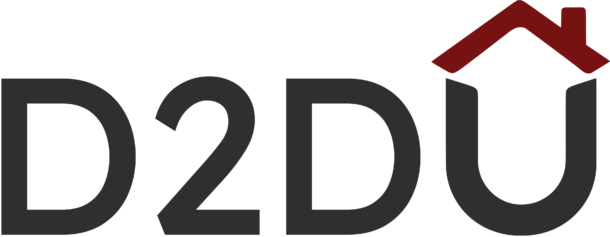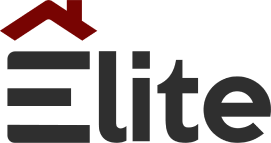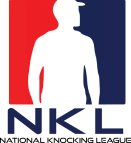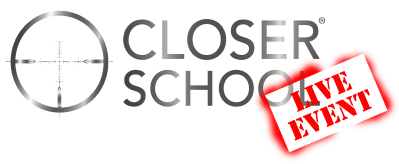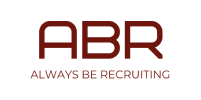Speaker 1: (00:02)
Bill, Can I help you?
Speaker2: Hey listen up, I’m bringing you the best content to ever exist in the door to door industry from sales leadership, recruiting, impersonal development.
Speaker 1:
Why would I need that?
Speaker 2:
Because never before have we been able to collaborate with the top experts in their industries, sharing their secrets and techniques and what makes them the best.
Speaker 1: Wait, who? Who are you?
Speaker 2:
I’m your host. Sam Taggart, creator of the D2D experts in D2Dcon. Is there a place we can sit down?
Speaker 1:
We’ll come on him.
Speaker 3: Register today for D2DCon, learn from over 40 amazing speakers including the real wolf of Wall Street Jordan Belfort. Come as a team. Learn as a team. Leave as a tribe.
Speaker 2: (00:48)
Hey Everybody. This is Sam Taggart, your host with the D2D podcast. And we are coming at you from Lehi, Utah. We’re looking at Mount Timpanogos behind this. And I’m interviewing today a really special guy, Chris Shipley, who’s done door to door for 13 plus years and he now works with, you know, a little bit of legacy but mainly develop, which is a software company that helps. Uh, all sorts of different solutions I guess is it’s a sales enablement platform, right?.And he’s helped a lot of companies really scale your business, give some cool tools and insights. And today we’re going to be jamming on the three deadly sins of recruiting. And so he was a speaker at D2DCon and he did a workshop on recruiting and how to leverage technology in systems to make sure that you’re recruiting right, retaining right and then really growing and scaling as a company. So honestly like super excited to have you on the show today. We go way back. I mean, did it at D2D tribe.
Speaker 4: (01:47)
This, it’s fun. It’s great to see all of it that’s coming together. See the community of people really, you know, band together to help each other learn and grow. I think it’s a phenomenal thing. Yeah.
Speaker 3: (01:55)
We’re all trying to be a part of. Yeah. So let me ask you this, like let’s kind of rewind and an egg shell. Who recruited you? If we’re going to talk about recruiting, I’m like, yeah. I’m like, let’s talk about how you got recruited. I, I, I think that’s an interesting question. It’s a really good question. Yeah.
Speaker 4: (02:12)
I was going to school at Utah State, uh, you know, that was back in the day where you had a bunch of different companies, industries. We’re really getting going. Um, had the opportunity to be really good friends with Cody vayable. Oh, okay. Um, is one of my long time friends, uh, literally like couldn’t say anything bad about the guy and uh, you know, he really went out of his way comparatively to some of the other groups that were, that I was talking to. I mean, I flew out to California to meet with companies. I was, you know, everybody was taking everybody to dinner back then. Right. So we were like three nights a week at dinners with different companies. Uh, so where are you shopping? You’re like, yeah, like I wasn’t sure. Right? Like I was trying to just figure it out. And this whole idea of like door to door sales, I’m like, I really want to be, you know, with a company that I know I can excel with.
Speaker 4: (03:03)
And everybody was trying to position why and how and who and all of the above. And so yeah, it was like full time shopping gig and of course it was a young college kid and you’re like, I’ll take free meals whenever they come. So it was pizza parties and Hamilton’s and Logan. Um, so what, what the police, what did Cody do that was different that set him apart to win your business? Yeah, I think at the end of the day, Cody really spent a lot of time with me, really turned to actually build a relationship, right? Like actually wanting to understand a lot more about who was I, what was I trying to accomplish? He really dug in and, and spent time with me, helping me understand why we can be successful together. And really in reality, Cody was a guy who I, when I looked at him and saw the skills and, and what he was able to go and accomplish, a, he was a guy that I wanted to be, you know, like at some point.
Speaker 4: (03:56)
Right. And so obviously him being one of the vps at vivid, you know, it shows that he was a guy who obviously knew how to get it down and has had a very successful track record. And so yeah, I mean I definitely saw some parts of what Cody did, you know, we, you know, we did a lot of fun things together of course. But at the end of the day it was, it was finding little things like, come over to the house. Let’s spend time together. Let’s actually walk through this. Hey, let’s go knock doors together. Let me show you sales. Let me, let me just handhold you through this process
Speaker 3: (04:25)
so you don’t an sm. Funny. What’s that? So was between Nick Hanson and Cody, you Abel. And he courted me because of course I didn’t, he didn’t hurt my business, but he did a No, but here’s what’s funny. So he did though. He did like close me and he used the best soft close I think I’ve seen in recruiting. Charles was it? So my phone, I had like some dinky phone, you know, just switch. He’s like, what the hell? Like why do you have a dinky phone? The only time I’ve ever had an iPhone, Cody’s like, come with me. He gets he, he drives me to the phone store. He buys me and my wife knew I phones and he’s like, let’s get you rolled in brother. And he freaking just like here. And I was like, what a cool, soft close. Anyway, so I felt so like loyal and died.
Speaker 3: (05:14)
I ended up not going down. I was like, but I got these phones and I was like, Hey, can I pay? I actually paid him back for the phones and not, I felt really bad, but I was gonna go to power. Like he went out of his way to even like say, just come on, let’s do it. And I think he even said, he’s like, Nah, dude, it’s cool. It’s on me. Like he didn’t even like walk the marriage. It wasn’t about the money, but it was different than what most recruiters would have done. Oh absolutely. So a shout out, there’s a fun little nugget for you guys. But anyways, so fast, you should have taken his money. Shit. Um, so fast forward, you, you know, had a career in the alarm space and then you got recruited into solar talking to me about that. Like
Speaker 4: (05:53)
yeah, it was interesting. I, you know, for me, I Cody knew this going in when we first started recruiting that, you know, he had really helped me understand that there was an opportunity to really role within the organization. But I think you always understood that there was parts of me that would want to go off and do my own thing at some point. Um, and so for me personally, I spent eight years doing door to door and the alarm space, um, felt like I had some pretty good opportunities to win some competitions individually, be a part of teams that won competitions. And ultimately for me it was just kind of going and getting that like entrepreneurial itch to go do something different. Right. But for me, I didn’t really think that I had all the rounded skills to go and craft a really successful business.
Speaker 4: (06:34)
So I actually just one day said, okay, like I’m going to move on. And when did Grad School, uh, which is not obviously the normal in our space. I’m going to go, I’m going to go, I’m going to go get some education. And ultimately spent two years with Verizon on their corporate side, which like I thought it would be the worst thing in the world to go spend two years in corporate America. Um, learned a ton. I ultimately realized that wasn’t what I wanted to do longterm, but I gained a ton of value out of the opportunities that I had to participate in projects there. Um, and then got with Doug and his team at legacy. Um, you know, he was obviously you’re recruiting me to come and do some different things with him and within his organization. And so fast forward to today and we own two different businesses.
Speaker 4: (07:23)
So obviously there’s legacy power, which is in the solar business and then this group canvas, right? And so canvas, we built tools for legacy originally. Um, the nice thing is that these guys have been building tools for 15 years in the space. Like Nichols, they built pinnacles dashboard, they built the vivid insider dashboard. I mean they did all these things from way back when. Um, and so Doug was quick to realize that and so obviously they, they made something work there and so does for today we have what we call a sales performance platform where really we’re taking ling taking sales enablement tools coupled with sales training. We Mash that all together to create what we call sales performance. And so we’re really aligned on trying to help companies better understand how to really scale, how to really grow and be more than just a one dimensional software piece. Cause obviously, you know, I think it takes a whole army to, to build a business. And so software I think is definitely more than one piece of the puzzle, but let’s definitely is, yeah,
Speaker 3: (08:21)
legacy for example, Doug quickly realized, Hey, I need to have a solar solution because selling solar the old way was so complicated. I had this document through this loan oh better than anyone else. You did it. It was like 10 10 different signatures on 10 different platforms. And, and dad was like, this is broken. And I think he was one of the first to kind of realize that if I invest a lot of money into tech, it’s going to simplify the sales process, which is then going to make my guys some more. And do you feel, do you feel like when I, I remember
Speaker 4: (08:56)
I was getting a sore, I was getting recruited by a million people and, and when he showed me that I was like, oh, that is dope. And the competition plus, right? So I think about software and a lot of different ways, but ultimately at the end of the day, I think it’s what you just said, right? When when we go into our business and we’re, we’re either launching your own business or we’re early on in our careers of recruiting the first guys into our team, you know, we’ve got to think through what makes their job really simplistic in nature, right? What did all the things that we can eliminate that can be kind of automated to make it to where it’s as easy as physically possible to get the rep into the business. But also a customer from a to Z. And solar’s probably, I mean I’m sure there’s got to be more process oriented sales than solar, but it’s definitely process heavy for short comparatively to waste anything I ever in the alarm space.
Speaker 4: (09:47)
I mean heck, we’d knock doors, I like 30 minutes text showing up. We’re rolling out. Like it was, it was no big deal. But ultimately solar takes a lot more work. And so, um, you know, Doug obviously realize that very quickly. And so it was one where we built tools that were really focused on an actual process versus just wham, Bam, thank you Ma’am type deals and also the competition side of things. I think Doug realized coming from pinnacle to Viv meant to hear to what makes some of these big sales companies who they are is the scoreboard. Oh, repetitiveness. The like, I mean, this whole cup thing, like, I mean talk about last summer by just having the right cultural and competition and dashboarding around that. How did that help calm, you know, how did that help production from a legacy stamp? Yeah, for sure.
Speaker 4: (10:38)
So I’ll give you an example. And this was like phenomenal to watch kind of unfold, right? So we’ve got this Guy Damien and our in our company, um, who is kind of the mastermind behind all these competitions, right? Was a part of pinnacle, was it vivid? You know, he was really understanding of what is the competition take, what do you got to put into it? How do you structure it in a way that makes sense for the business as well as for the reps, right? Because anytime people look at competitions, it’s about let’s just go put on the volume, right? But at the end of the day, if you’re smart about it, you can actually put on the right type of business while you’re at it, right? So you can really start to dig into what’s the Kpis of the business, where we more profitable? And you can start to align the sales force with what you need in the business as a business owner as well.
Speaker 4: (11:20)
And so, uh, solar is obviously year round and so we want to run a year round competition. So we did it kind of like a NBA season for instance. Right? So a normal regular season with on and off. You know, some weeks we were on, some weeks we were off, we would do a playoff system where it was like back to back to back and you kept going through and you’d play through those and then ultimately a championship, right? So it just so happens that we realized in, in that business that right before Thanksgiving is a really tough time for salespeople, right? The week before thanksgiving, everybody’s checking out there like, I’m going on my vacation to see my family or go to the beach or whatever it might be. But at the end of the day we thought, well, if we have a big lack in sales, well why don’t we lay our competition and structure them in places where we need sales volume right?
Speaker 4: (12:12)
At the end of quarters, at the end of the summer, at the end of the summers, at the end of, you know, the winter quarter, obviously you’re looking at Thanksgiving and Christmas, where do we get the big ramp? Right? So we structured the championship, we to be the week before thanksgiving. Okay. Right? So we had about 150 reps within legacy competing the last week with their different teams. Um, and it was a team style competition, but ultimately we had a, we’d have to go look at the numbers, but it was like literally almost 40% of the sales force had their best week ever. Ever say 40% legacy power had their best week ever in four years of company history the week before thanksgiving. That’s crazy. It’s insane. So we are able to leverage that, that competition platform and that understanding of driving the right things for the business. So you take that, you couple it with you know, smart training, you couple it with obviously a lead management or a data collection tool. Obviously dashboarding behind the scenes so everybody can see it. The executives can align to what’s taking place. Now you actually have technology that’s cohesive and is actually scaling the organization instead of it just being, you know, one piece to the next and trying to figure out how to make it all function together.
Speaker 3: (13:25)
I love it. I love it. So let’s talk, Kevin, let’s segue this into recruiting because this is, this is recruiting in my opinion. It’s like I see somebody have a bigger week than ever and numbers that no one’s ever fathoming and I’m over here getting crappy results at x company. I see them that’s recruiting. Like it just, it just simply and, and, and so there’s the three sins of recruiting, right? And the first one is we over promise and under deliver. And we just say a lot, right? I’m going to go start a little pest control company, right? And I’m like, dude, we’re going to have the best training. We’re going to have to, you’re going to sell more with us. We pay this, we do this. And, and then all of a sudden the guy plugs in and what happened? So talk to, you know what I mean? Talk to me about this, kind of like this over expectation or this, this full of like words, but no meat, right?
Speaker 4: (14:17)
About it. And sales, right? Like the age old saying is, is stop talking, talk, talk. Actually listen. Right? But at the end of the day, when we’re first starting out, we do a lot of talking, right? So it’s the same thing when we’re recruiting, we’re like, we’re the best. We know how to do this better than anybody else. Here’s the reasons why we’re going to be so much better. And it’s a lot of fluff a lot of times. And so I think sales reps, especially as they’re seasoned in the business, they can see through that very, very quickly. But I mean, even now, like you think about it, it’s your on a lot of like what it can be. And they talk about what does it going to be in three to five years versus what is it today? And people quickly get in and they go, oh no, I made a big, big mistake, right? And so they start to understand really, really fast. Oh my gosh, I’ve just been sold. Which we all know people love to buy. They hate to be sold, right? And so that’s the same thing in recruiting. They want to be a part of your team. They want to be a part of something greater. But if they felt like they got sold a bag of, of nothing, that’s where it unravels. Like it, it goes quick.
Speaker 3: (15:30)
Yeah. And I think to back that up, like take, take, let’s just take, you’re going to be, then you’re going to sell more at my company. Let’s say that that’s this whole, that’s the angle that the recruiting pitch. Well if I had a tool like the university platform or whatever pitch, or if I had a tool that I could pull up and be like, let me show you how you were going to sell more, that differentiates us versus the other company. And then that’s what we help companies do, right? So it’s like, let me show you this platform that we have and these videos that we have and the system and accountability in the tracking and the, the programs that we implemented into our, you know, our meeting structures and our this and this is actually what we have today and what we’re doing versus where are you? What, what, what’s your company doing? Right. That to me is like take all fluff out. Right. And I think there’s the tool, the technology that the proof in the pudding that so many people lack is this. They sit, they talk, they talk versus like, let’s pull up a computer a little. Could you tell me, do you think this would help you sell more?
Speaker 4: (16:37)
Walk them through it through it. I think about it, it’s like, you know, in my, in my d two d con presentation, like the first part of it, it was literally like, how do you recruit? Are you just recruiting on a pay scale and your big truck and your fancy house? Well, let’s be honest, that happened a lot back in the day. Right? And it still does. The funny thing is, is then I told them, I frame this up and I said, okay, so let me show you what your recruiting class looks like for this year. Right. And it was, it was a bunch of guys that looked like they all came from the Jersey shore wearing, you know, wife beaters and muscles and tats and all this crazy stuff. And I’m like, that’s who you get, right? Like, and that’s, that’s not to say that that can be a bad thing.
Speaker 4: (17:14)
Obviously industries are dependent and it’s, it’s whatever you want it to be. But I think as we get smarter in indirect sales, we start to understand that it’s not just about the money, the money comes, it will be a part of what, what we, what we attract to us if we actually go and put in the time and the effort. Right? So this idea of a system, as you said earlier, right? That’s kind of like walking into to bullet point number two, you’ve got to have a blueprint for what actually walks them through how and where they’re going to become successful as part of the organization. And I think as part of that system, you really have to understand who these people actually are, right? Just like when you fact find with your customers, when you’re going through whatever product or service you’re putting in front of them, you have to know what their hot buttons are. You have to understand what their needs and wants are as an individual or a family or whatever it might be. And ultimately it’s the same thing with recruiting. You have to dig deep into the layers to truly understand what is it going to take to make Sam tagger happy. Right? And so an iPhone sounds like it worked pretty well, but it didn’t quite
Speaker 3: (18:23)
only time. I’ve had an iPhone for a total of two months. So you didn’t ask right? The end of the day. I think what it drives
Speaker 4: (18:38)
down to is you, you literally have to have a system, you have to have a blueprint, you have to have something that’s so systematic. I think about when I was selling, and I would literally, I got to the point in my career where it was, I asked the exact same questions at the exact same time getting the exact same results and ultimately I watched my sales absolutely skyrocket, right? Yeah. When I got into what I call like predictable success, it was because I created this process that I knew was bulletproof, where I’m like, if I do a, B, and c, I get the nugget, right? So at the end of the day, it’s all about finding out what your system is. And it’s plugging guys in that system. Right?
Speaker 3: (19:18)
And that in that role, number two is dumb and that sin number two guys, it’s simply you don’t have a system to plug them into and are, you don’t even know what your own system is. Four for three things, how to recruit. There’s a system around recruiting for that conversation, finding people, getting your people to recruit. There’s the system of, okay, what happened? And that’s why I built recruiting magic. It’s a software. I was like, I’m going to build a software that’s a system on organizing my recruiting pipelines and the and, and we’ve been crushing with that because it’s like I watched guys have a fricking notes in their phone and no systemized to say, how do you keep accountable to recruiting the key ready?
Speaker 4: (20:00)
This is how they like, this is where I love it because people in sales are like, I’m like, how do you track your sales funnel? How do you track your recruiting apple apple notes,
Speaker 3: (20:09)
apple note, that’s like an excel or something. I’m like, that seems really, really difficult or, and a total headache. So that’s what recruiting Madec is. Talent management tracking system where you can keep people accountable. So I goes back to if I was in recruiting company, if I’m like a pest control company or something, the solar company and I could go to a manager that I’m like, we’re looking to recruit like, Hey, what are your biggest pain points is probably growth in recruiting. What come, what are you, what is your current company use for a system to actually help you do that? Uh, I just kind of on my notes, they, you know, they have me on to make sure I recruit blow blow ups, ask how many recruits or potential recruits, how many recruits I have. Right. That’s the extent it was. That’s what it was. Right? So if I’m a recruiting company and you’re trying to get you as a leader, I’m like, check this out. Our company, we have this software and it, and it tracks exactly what you’re doing. You can have your team leads that I’ll, I’ll keep accountable and you can actually manage their pipelines and help them and you know what I mean? And they’re like, oh, that’s pretty dope. Are you more inclined to come work for my company or stay at yours? You know what I mean? That’s a simple system.
Speaker 4: (21:12)
And if you think about it, Sam, it’s it. You always want to have a competitive pay scale at the end of the day. But if you can help people see how and where they’re going to be able to convert more deals, right? And more sales to the bottom line, you’ll make more money.
Speaker 3: (21:24)
It’s inevitable 100% and and, and, and that goes to the third thing is a sales system and a sales training system. So like the first thing is a recruiting system. Second thing is a sales system or a training system on how to get them to sell. Because here’s another thing, I’ve watched people recruit a hundred people and they lose a hundred people. And I’m like, good job. I had a cough fact, I had a coaching conversation yesterday with a guy and he’s like, well, you know, I’m really nervous about this whole recruiting system. And I just, every year I recruit, I just lose them all at the end of the summer. I’m like, you don’t need a recruiting system. You need to teach them. Some of these teacher had a train and leaning actually like some of these Dj crew. Yeah. It was like you can recruit. The problem is you can’t keep them in the, the reason why is because they’re not making money and then they’re not getting trained properly or lead properly. And so having a system when you onboard them, when you’re, you know, six weeks from now, what is he doing in a year? How is he going from this to this? So like what are some things that you found helps step number two, which would be a training system, things that legacy when you onboard somebody or you know, things that you’ve implemented a certain company.
Speaker 4: (22:32)
Yeah. Turning is a really interesting one, right? Because if you think about it, when you bring them into the organization, salespeople want to do one thing. They want to just get going and they want to sell and they don’t want to sit behind a old school computer for two weeks going through testing and all this other nonsense to like get them up to speed. Right? And that’s just not, that’s really not what we do. We’re like, come out, join us on the doors, let’s go knock together. I’ll teach you how to do it. But ultimately you’ve got to have a way to be able to break down the entire sales process, right? You’ve got to create micro topics and you’ve gotta be able to create categories that actually can start to formulate a full repository of videos. And so ultimately, you know, we launched a product called pitch here about 10 months ago, but it really was structured around how do people learn, right?
Speaker 4: (23:16)
So as I told you earlier, I spent time at Verizon, right? Did digital advertising for two years around mobile advertising. And ultimately it was around how do we go and get more content in front of people? How do we get engaging content, but also how do we convert? Right? So we took a lot of the same principles and theories that I’d learned there. We started to think through, well, who are the people that are in this business that we’re recruiting today? Add their add, and how old are they? They’re generally speaking a millennial or a Gen, right? So how do all those people were? So let’s break it down, right? So if we want to do training, we got to think through how to actually learn. Well, there’s these few little basic platforms that everybody learns from Instagram, snapchat, Marco, Polo, maybe Facebook, that’s like, yeah, that’s where they get all their content.
Speaker 4: (24:03)
That’s where they go watch videos, they appear, people post things, whatever, a little bit Twitter here and there. But millennials and Gen z’s, like they’re really just like gimme Instagram, gimme, snapchat. I’m good. Right? So we, we took those principles and recognize that obviously that’s how they need to learn for train. So we create a training platform that now integrates into their, you know, canvassing tools and we’re able to obviously provide training to them where it’s bits and small pieces of the entire sales process. So we kept videos that a minute long. We make it to where it’s quick, simple and easy. But that’s really, in my opinion, a very like simple format for how do you actually break down, shrink it. So it’s not even about pitch, it’s about actually taking a step back and thinking through how do these people learn? How do they want them? Right? They want to learn by getting out there and getting on the doors. They don’t want to sit and take tests. That’s just we’re add, we’re wired that way and they want to be able to learn really, really quickly and very focused and get back on the doors. Cause that’s where they make their money, right? So we don’t want to take him off the doors. We want to keep them cranking.
Speaker 3: (25:11)
And then the third one is a sales sales tool. Meaning I watched guys plugin. So solar, let’s just do, so yeah. So you recruited a bunch of guys and if the sales process takes me four hours versus x company, that takes me 20 seconds. You know what I mean? It’s, it’s like, like that was actually, I’m not trying to dog anybody. When I first got into solar viven solar, solar’s recruiting me and this other company’s recruiting me. Right. And I was like, how does your closing docs work and closing the process and a veteran reps going to ask that. A rookie reps never going to ask that question. Yeah, for sure. Because they don’t even know. So I’m sitting there going, well if it, if, if it takes me a week to close a deal here and it takes me a day to close a deal here one night, close more deals here, even though you’re maybe paying me more here, I’m going to close more deals here, therefore make more money.
Speaker 3: (26:03)
Cause at the end of the day I care about what my bank account looks like. Of course it’s a lot of people will recruit off of a payscale versus a well, you’re going to have a bottleneck of installed a bottleneck of sales because you’re spending so much time trying to email and trying to fix this and tried to all, you know what I mean? If the hours spent there versus just closing more deals. Roofing industry is the best example. I watched them call them project managers. I don’t know if you know much about the roofing, so if you’re an roofing, check this out. I go consult a lot of these roofing committed speaking next week at a big one. And uh, anyway, I’ll go in. I’m like, what’s your salesmen have to do? And I’m like, if you’re recruiting me that I’m a talented sales dude and tell me what I would need to to get paid on a deal.
Speaker 3: (26:45)
And they’re more of a process, right? So they’re like, okay, you got to sell them, sign the contingency. You got to call the insurance, you’ve got to go to the meet with the adjuster, then you’ve got to go get the scope from the adjuster. Then you’ve got to go back to the customer. You’ve got to close them. Then you’re going to go watch it, get built. Then you’ve got to go collect after it’s been paid by the insurance, and then you gotta go. You know what I mean? I’m like, wait, you’re telling me? That’s what I have to do to go close. It makes sense. As good as solar. Oh Dude, I’m talking like, oh, but they make the sales do do all of it. And I’m like, Oh hell no dude. I was like, how about this? No, I got to go to us in inspection on the roof.
Speaker 3: (27:16)
I forgot that step right when he got jumped down. Show him the pictures, then submit the picture, you know, all this stuff at work and then all the paperwork behind that. And I’m like, uh, I’m a sales dude. I got add, I can’t even finish it. Emailing everybody. So anyway, talk about, so systems, I was like, what if you just had an APP and what if you paid a dude eight bucks an hour to go jump on the roof and actually take some pictures and just follow you around. And I just could go sell the next door neighbor in the meantime and I could then just press a couple buttons and then it would go boom, boom, boom, boom, boom. And then the roofers like, oh, flight goes off like a light bulb goes up and go. And so I was like, all right, follow me.
Speaker 3: (27:54)
I’m out in Maryland. I was like, and I’m getting on the roof. I’d, I’m not my first route, this is a first time I ever did rifts and in Maryland, this little company and he’s like, all right, now we’re going to get up on the roof. We’re going to expect, okay. That took me 30 minutes and I was like getting bored. I’m like, I thought we were out here doing sales training. You don’t need to show me how to take pictures of a roof. I was like, next door I sell, I’m going to have you get up on the roof, take some pictures of stuff and actually go next. So I got the two guys following me then because I got, I’m so busy up on roofs, so I was like, I need another one. You guys, you can’t even keep up with taking the pictures.
Speaker 3: (28:25)
So I’m like, all right, see if I got there, see my gun in there, I’m on closing more deals. And they were like, oh, the Jones effect. Scott. Real real. Yeah. I’m like, see that guy, see that guy your next, there’ll be over here and five and that was my pitch and you’re just going and I’m just not in the next one and I was, and they were like, wow, I’m like, I closed more deals in two hours and you guys close in two weeks because I didn’t have to sit there for 30 minutes of course. And then all of a sudden it, it’s, that’s where I think a lot of people fail is this like the actual selling process that they plug people into creates a failure. That’s this. You know what I mean? For sure. Anyway, I want to put those 2 cents in there because I’ve just watched companies and I’ve consulted over 50 last year and I’m like, there’s good ones that are winning. Sure. And they’re crushing and their sales guys, they were like, this is easy and I can recruit off of that of course. And then there’s ones that I’m like, aw man, I would just come into this and get shell shocked and be like, this is a headache.
Speaker 4: (29:20)
Or if you think about it, I mean, at the end of the day, companies are already either leveraging software and their recruiting process or they’re not. It’s just, it’s in. The reality is if they’re not somebody else’s because somebody is taking the time to actually spend with the rep and help them to see, here’s our system, here’s our process, here’s how we go and do these things. Here’s how and why you can be a turnkey solution walking into the business, right? I mean, if you think about it, like I, I, I’ve, I’ve, I truthfully believe that door to door sales is essentially a franchise in the box. That’s why I’m like, we don’t even charge for this stuff like chick fil A’s, like right around the corner here. They’re one of the cheapest franchises to get into. It’s 10 grand, right? Most or even a lot more expensive than that, and you’ve got to have crazy amounts of liquid cash, et cetera. But at the end of the day, direct sales is literally a franchise. Where are we? Say Look, come be a part of our organization, be a part of our brand. Go do a, B and c and it gives you d and ultimately it’s a franchise. You’re able to just turn what everybody knows how to go and work through and you’re ready to go. It’s, it’s, it’s, it’s insane because I think a lot of people they just throw mud at the wall.
Speaker 3: (30:36)
I think if you think you can recruit by throwing mud at the wall, you’re going to take a long time growing. How many guys does legacy have? Like if you had to guess
Speaker 4: (30:45)
from probably 900 to 1200 in any given moment, depending on the seasonality of the business
Speaker 3: (30:51)
and, and a lot of reps are, a lot of people listening to this podcast probably couldn’t even fathom 1200 reps. I go in, I mean I’ll speak and stuff and they’re like, I just want to get to five. Sure, absolutely. But I’m like, guys, you need to be laying the foundations and there’s programs and Co and technologies and things out there that will help you that are actually very affordable. That speed that up, that take a hat off. Instead of you sitting there behind an excel and you sitting there behind Xyz saying,
Speaker 4: (31:23)
I got to do everything and it slows your business growth down. I mean legacies, what this has been only a couple of years. I mean that’s real. That’s really in reality, Sam, when it comes down to is how do we actually scale organizations? Recruiting is scaling, right? Because you’re putting head count on the can go put on volume that ultimately creates dollars to the bottom line. So how do we actually do that? And it just, what you described is if you’re a business owner who’s literally God, no systems and no tools and no technology or trying to do it all yourself, there’s no way you’re ever going to scale your organization. So that’s where when we spent time thinking through what is our platform really out to accomplish, it’s about sales performance. It’s about scaling the company, which is the sin. Number three, they don’t have a tool or system to duplicate success. Correct. I can’t replicate a top performer because there’s no conscious competency or what you said, uh, predictability, selective success, predictive success. You can’t create predictive success without any tools or system to create that. So in my opinion, that’s the sin. Number three is the struggle recruiting because they can’t show, well look, I plug this guy in and McCory when I plugged this guy and look where it went,
Speaker 3: (32:40)
I put this guy in and look where he went and now you’re here. Where are you went, go get guys to plug in. And then you keep doing this is the cycle. You keep the cycle and it, and it’s, it’s an a plus B equals c, and what happens is you’re then getting the your leaders to plug a dude in and then another leader to plug a do did. And it just do it. That is scale.
Speaker 4: (33:01)
It’s just a snowball effect, right? I mean, think about momentum. You know, momentum is a funny thing. It takes months and months of create and can literally take seconds to ruin. And so if you think about that one for a quick second, that’s really the goal here is go and create momentum by putting things in place that make the machine started moving to the point where it’s just in sync and it’s in rhythm and obviously, you know, we’ve got to spend time and effort in multiple different parts of our companies in order to continue that momentum and that success. But definitely the, the, the software and technology can be a part of that system that really enables reps to unlock their potential. Because I look at so many reps that I watched over all the years who I’m like, they are phenomenal, right? But they got into situations where they’ve maybe got recruited for the wrong reasons. And so some company that literally destroyed them for a period of time and they had to kind of take a step back and recognize that there was an opportunity to go back to a system and boom, they created, you know, success again in their own organizations or whether I’m groups, but you watch that happen a lot. So let’s speak to the dude that doesn’t have massive multimillion dollar solar company. Let’s speak to the dude that’s like
Speaker 3: (34:13)
in the phase before momentum and I call it concentration and it’s like me going to the gym for six months, still don’t have a six pack. And I’m like, that’s called concentration. Uh, I’ve been to the gym, we’re just starting it from ground zero. So it’s, I haven’t hit that momentum phase. I haven’t hit the like, when am I going to have my break? Right. So what advice would you give to that dude that’s like in concentration mode, laying the foundation but can’t see the built house at that point? Right. It’s kind of like what we want to tell. Like, I mean, I think a lot of it, I, I
Speaker 4: (34:50)
been fortunate enough in my career to have two startups on my own as well outside of all of this, and so I really take a step to think through it in that perspective and think, okay, if I’m going to go start a new organization, which in my opinion is a new business and new start up a new venture, whatever it is, really start to think through what’s going to make your company stand out and be different than somebody else. Right. I think of companies that they have certain parts of their culture that are way different than other companies, and to me, I don’t see that as a bad thing for one company or the other, but it’s what attracts the right talent or what they’re trying to get and what those people are buying in to to be a part of. And so that’s an element of it.
Speaker 4: (35:33)
And Identify your differentiator, identify the differentiator, really try to value what’s going to make you different than somebody else. Because ultimately if you can’t show that to a recruit, then it’s just going to come out to literally, so how much are you going to pay money versus, and that’s a short live strategy for any company because that dude is only going to be at your company as long as he doesn’t get offered more money to go somewhere else. And the second that that happens. So yeah, he’s out yet. Right? So I think that’s phase number one. I think phase number two is actually thinking through, so now that we actually have this vision and this mission statement and our own personal mission statements, right? What’s gonna make us different? How are we gonna, you know, make that a very apparent change for those that we work with.
Speaker 4: (36:18)
The next phase is, okay, well then what am I going to be able to do to put into place that’s going to make these people successful? Right? What sort of, what sort of processes do we need actually need to think through? This is something I learned in Grad School. It’s funny cause it was like the first day of school and they said we’re going to teach you one thing in business and and of course I’m like there’s a million things to learn in business. Right? But they said one word that’s going to emphasize more and more and more the more you go through school is process and it at that time I had no clue what they’re getting at. But ultimately as I’ve been able to go through my career and see some of these things develop the process of becoming as an individual, the process of becoming as a business, that process of instituting, you know the a plus B plus c equals d scenario, right?
Speaker 4: (37:06)
Those sort of things. You’ve got to understand what that process is and create that blueprint. I look at like think of like an urban Meyer or a Nick Saban or some of the greatest coaches out there in different sports. Everything about what they do is systematic. They do, they approach it the same way and they get the exact same results. I mean there’s a reason why those guys were crude top tier classes every single year yet, right? They just have a proven track record over time that makes it easier. But if I’m, you know, let’s think of a, a small school lets you know, even just like a Utah State for instance, right? They’re now starting to get some of this momentum in their organization. Will, how did they do that? They took a step back and said, where can we differentiate? How can we be different? What’s going to attract the talent that we’re looking for?
Speaker 4: (37:53)
And let’s go build on that momentum, right? I think of some of the big companies in the door to door space right now and you know, you look at it and I’m like, they’re behemoths. They are monsters. They have huge organizations and they’re not slowing down anytime soon, right? But that’s not to say you can’t go and start something and be, have something really special that’s yours and you can grow and be a part of. And thank you. Also, you have to be willing to identify what sort of company do I really want to build? And that’s also like some guys want to be a part of small companies. Some people want to be a part of huge companies. You just gotta know who you’re attracting and what they want to be a part of. And I think where you have that alignment, that momentum really creates that momentum and snowballs and then all of a sudden you’ve got what you’ve been looking to go accomplish.
Speaker 3: (38:43)
I love it. I love it. Now get after nugget after nugget and if you’re learning something, share this or like this. Right now, because we’re in the heat of recruiting, we’re ramping up for peak seasons and it’s like, in my opinion, so many people are just shooting blind. They’re throwing darts out there being like, I hope I land somebody and then that dude get screwed because he didn’t land it into like an empty promise. And so I love how you’ve just outlined this out to say, let’s avoid these 3 cents. You know what I mean? Let’s avoid over promise. Let’s avoid putting people into a system that doesn’t work or there is nonexistent and let’s duplicate. Let’s have a system to duplicate and create and replicate predictable success. Yup. And you know, I wanna I to acknowledge you for one, what you’ve done over the last 13 years. I mean, there’s a reason why you’re on the podcast. It’s like a top talent right here and one is a great dude and in and of itself outside of work, but to just thanks for taking the time, man.
Speaker 4: (39:43)
This is no lava. It’s fun. This is fun to jam. It’s fun to sit down and hang out. You know, we’re, we’re obviously, you know, good buddies outside of the office too and we can go have some fun, but this is fun to get down and like break down what, what we’ve learned over so many years, right? These are the things that have helped us along the way. And that’s what I love about what we’re doing is we’re able to just help each other share and build best practices and allow others to be a part of, you know, how and what makes different companies special and so grateful for the opportunity to be on here. Love DDD nation. You know, let’s get cranking. It’s busy. It’s, it’s time. Let’s go. It’s, it’s the, it’s like the, the warm before the storm, right? I’m like, let’s, let’s really heat up. It’s 2019 is going to be a huge year for a lot of companies. Like I can feel it in the air for sure. Love it. Love it. Okay, well
Speaker 3: (40:31)
thank you so much. You guys are awesome. Give him a big thumbs up and share this or don’t share. This must be where like, I don’t want to share this. There’s two good, if everybody knew this existed, then they’d go win. And so, I mean, or don’t, I mean obviously keep it for yourself now, but that’s the whole point of this is, is sharing, collaborating. And honestly, a lot of the people watching or listening to this are going to be like, oh, that was really good. And then keep doing what they’re doing. You know what I mean? So my invitation is, say, there’s a lot of good stuff in this. Go make a difference change. And we’ll see you guys on the next episode.
Speaker 5: (41:03)
Thank you, sir. Thanks Zach.





